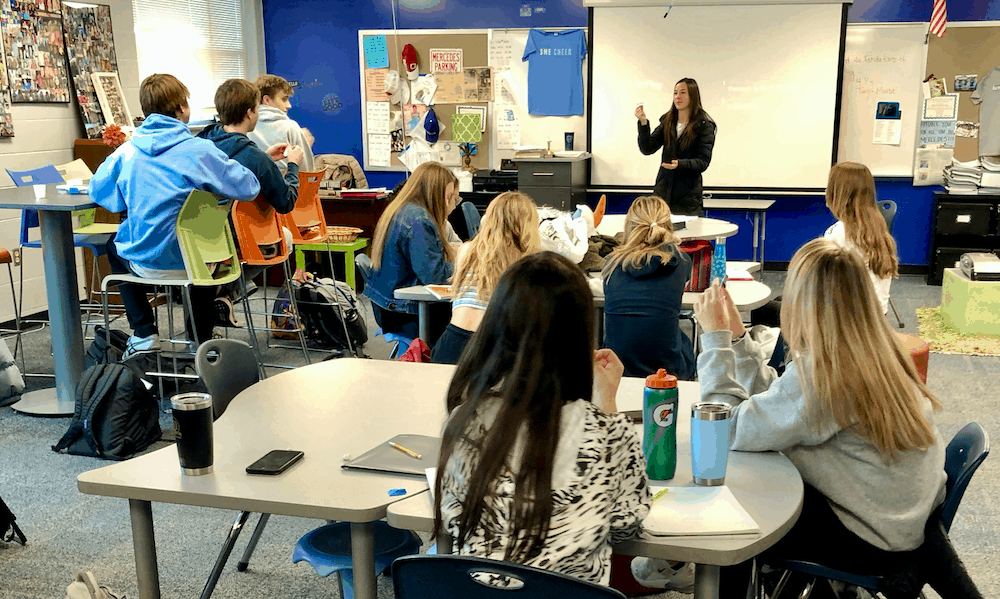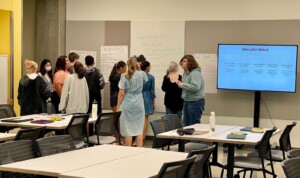Leaning into the Innovation Opportunity

School and system leaders have about two months to make four important decisions about the future of school: how to blend digital content into the core, link it to an updated plan for remote learning, plan for super hygiene and distancing onsite, and starting (or partnering with) an online school.
For more than a century, education in America has largely been an individual craft. While context varies, teachers have had a lot of latitude in what they teach, how they teach it, and the tools they use. That ended two months ago.
In what is likely to be the most challenging ever, next year will make clear that education is a team sport–collaboration and flexibility around common tools, resources, and teaching strategies will be critical to meet dynamic conditions and student needs this fall.
Building on the important decisions for next year, there are three innovation opportunities focusing on the success skills of thriving humans.
1.Thriving Humans. With lots of different needs, having been in many different circumstances, students will return to school this fall eager to reconnect with teachers and friends. There is a unique opportunity to focus on helping young people thrive–to focus on their social and emotional wellbeing.
Now more than ever, it’s important for young people to learn self-awareness and self-management, the ability to build productive relationships, and made good decisions.
Students want to be seen, heard and valued. That means putting social and emotional learning (SEL) at the heart of learning and making it central to school culture and learning experiences. Secondary schools can focus on SEL in advisory periods and update their approach to discipline to redirect behavior in more productive ways.
2. Meeting Learners Where They Are. Learners will come back from remote learning all over the place–some ahead, most behind. Instead of just pushing every student to the next grade, there is an opportunity to meet students where they are and help them set goals for progress.
Called mastery- or competency-based learning, it will be valuable to spend the first week back to school reconnecting with learners, diagnosing learning levels, and creating performance groups. Teaching each learner at their level is more possible in another year where there is less likely to be pressure to focus on grade-level testing.
Competency-based learning is also about authentic evidence of learning. Teachers all over the country have or soon will be considering new forms of evidence to help students progress or graduate. With states like California dropping traditional college entrance exams, there is a new opportunity to help learners assemble portfolios of evidence that help them chart their postsecondary path.
3. Work that Matters. Many learners have had the chance to do more interest-based learning while learning at home. School closures and the break from state testing are an opportunity to promote work that matters to learners and their community. Every school has an opportunity to introduce more community-connected project-based learning.
Encouraging work that matters requires teachers to pique the curiosity of learners with interesting driving questions (the #GlobalGoals are a good place to start) and give them the opportunity to co-construct a project that results in a product valued by the learning and the community.
As we think about the next school year, the new opportunity is helping learners thrive, meeting them where they are, and encouraging work that matters– combining social and emotional learning, competency-based learning, and project-based learning.
These learner-centered strategies can be incorporated into the core blended learning that students engage with at schools and when learning remotely. They can also serve as the design principles for new academies and micro-schools serving unique groups of students or focused on a career pathway.
In what is likely to be the most challenging school year ever, there is an opportunity to create more valuable learning experiences and schools that are more humane and more community connected.
For more see:
- Hard Reset: What Will Be New Post Pandemic
- How to Reopen Schools: A 10-Point Plan Putting Equity at the Center
- Podcast: Eric Tucker on Reopening Schools with Equity in Mind
Stay in-the-know with innovations in learning by signing up for the weekly Smart Update.
This blog originally was posted on Forbes.








Madeleine Dean
I love the points you highlighted in this article. It will be a unique and challenging school year moving forward but there are also many ways that we can grow and improve our teaching and learning. At CVESD we will definitely be focusing on these points! Thanks!